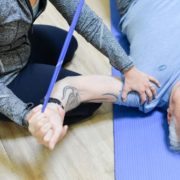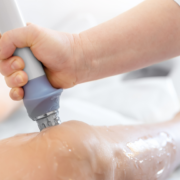Don’t Let Holiday Stress Turn Into Pain: 3 Simple Strategies
Don’t Let Holiday Stress Turn Into Pain: 3 Simple Strategies to Stay Healthy in Portsmouth, NH
The holidays are meant to feel warm, festive, and joyful. But for many people here in Portsmouth and the Seacoast area, they also bring a level of stress your body can’t help but absorb. Between shopping, hosting, traveling, and trying to squeeze everything in, your nervous system can go into overdrive. And when that happens, stress often shows up physically — tight shoulders, a stiff neck, a cranky low back, or even tension headaches.
The good news? You can interrupt this cycle with a few simple habits. These strategies can help you keep holiday stress from turning into neck, shoulder, or back pain — and they’re easy to start right away.
1. Try Belly Breathing to Reset Your Body’s Alarm System
When stress rises, your breathing becomes shallow. You might not notice it, but your brain definitely does. Shallow breathing tells your nervous system that you’re under pressure, and your muscles respond by tightening. I personally feel this tension through my rib cage and into my neck when it gets bad enough.
Just one or two minutes of deep, intentional breathing can reverse this entire pattern.
Wherever you are — in the car, standing in line on Congress Street, or even at a holiday party — try this:
✔ Take a slow inhale.
Fill your belly, sides, and lower back with air.
✔ Exhale naturally.
Let the air fall out without force.
Each deep breath acts like a reset button for your nervous system. It helps stop tension from turning into knots, spasms, or lingering pain in your neck or lower back.
2. Practice Gratitude (It Physically Changes Your Stress Levels)
Gratitude isn’t just a feel-good idea. It’s a simple mindset shift that has measurable effects on your body.
When you pause to focus on something positive, your brain reduces its release of cortisol — your main stress hormone. Lower cortisol leads to:
- Lower muscle tension
- Happier blood pressure
- Better sleep
- Less strain on your neck, back, and hips
A gratitude practice doesn’t need to be fancy. It can be as simple as:
- Thinking of one thing you appreciate while drinking your morning coffee
- Writing a single sentence in a journal before bed
- Setting a daily alarm to remind yourself of something good
These tiny moments tell your body: “You’re safe. You can relax.” Your muscles respond in kind.
3. Move Daily to Break the Stress Cycle
Chronic stress triggers your fight-or-flight system. It’s helpful if you’re running from danger — but in modern life, most of our stress comes from calendars, inboxes, and long to-do lists. If that stress energy has nowhere to go, it lingers in your body as muscle tension.
Movement is how you release it.
Personally, I love walking around Portsmouth and the Seacoast. I aim for 10,000 steps a day. When the weather is too cold or I’m stuck on Zoom, I use a walking pad. I always feel better afterward.
But walking isn’t the only option. You can also:
- Go to the gym
- Stretch for a few minutes
- Run up and down your stairs
- Do 30–60 seconds of jumping jacks
Just 5–10 minutes at a time is enough to tell your brain the stress has passed. Once that happens, your cortisol levels naturally come back down — and tension is less likely to settle in your joints, neck, or back.
Your Body Will Thank You
You may not be able to eliminate holiday stress (and if you figure out how, please let me know!) — but you can prevent it from turning into pain. Small habits, repeated throughout the season, make a huge difference. And you can keep using these same habits long after the holidays.
But if you’re already dealing with significant tightness or pain that isn’t improving, these strategies might not be enough on their own. A mechanical pain specialist can help you identify the true root cause, calm things down quickly, and give you a clear plan so you enter the New Year feeling better — not worse.
If you need help or guidance, we’re here for you.
Dr. Carrie Jose, Physical Therapy Specialist & Mechanical Pain Expert, writes for Seacoast Media Group and helps people on the Seacoast get rid of back, neck, hip, and shoulder pain naturally.
For more resources or to get in touch, visit www.cjphysicaltherapy.com or call 603-380-7902.










